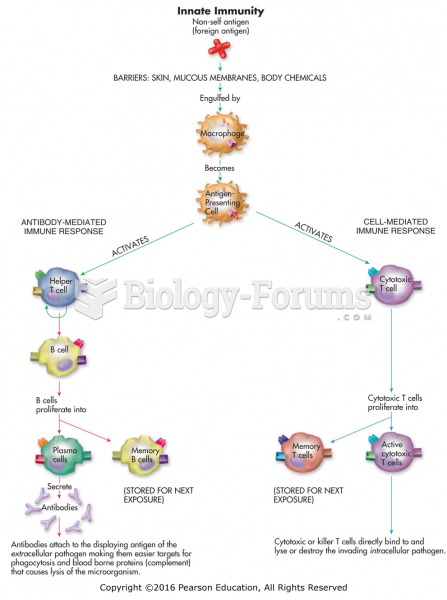|
|
|
Human stomach acid is strong enough to dissolve small pieces of metal such as razor blades or staples.
Approximately 500,000 babies are born each year in the United States to teenage mothers.
If you could remove all of your skin, it would weigh up to 5 pounds.
Walt Disney helped combat malaria by making an animated film in 1943 called The Winged Scourge. This short film starred the seven dwarfs and taught children that mosquitos transmit malaria, which is a very bad disease. It advocated the killing of mosquitos to stop the disease.
According to the American College of Allergy, Asthma & Immunology, more than 50 million Americans have some kind of food allergy. Food allergies affect between 4 and 6% of children, and 4% of adults, according to the CDC. The most common food allergies include shellfish, peanuts, walnuts, fish, eggs, milk, and soy.







